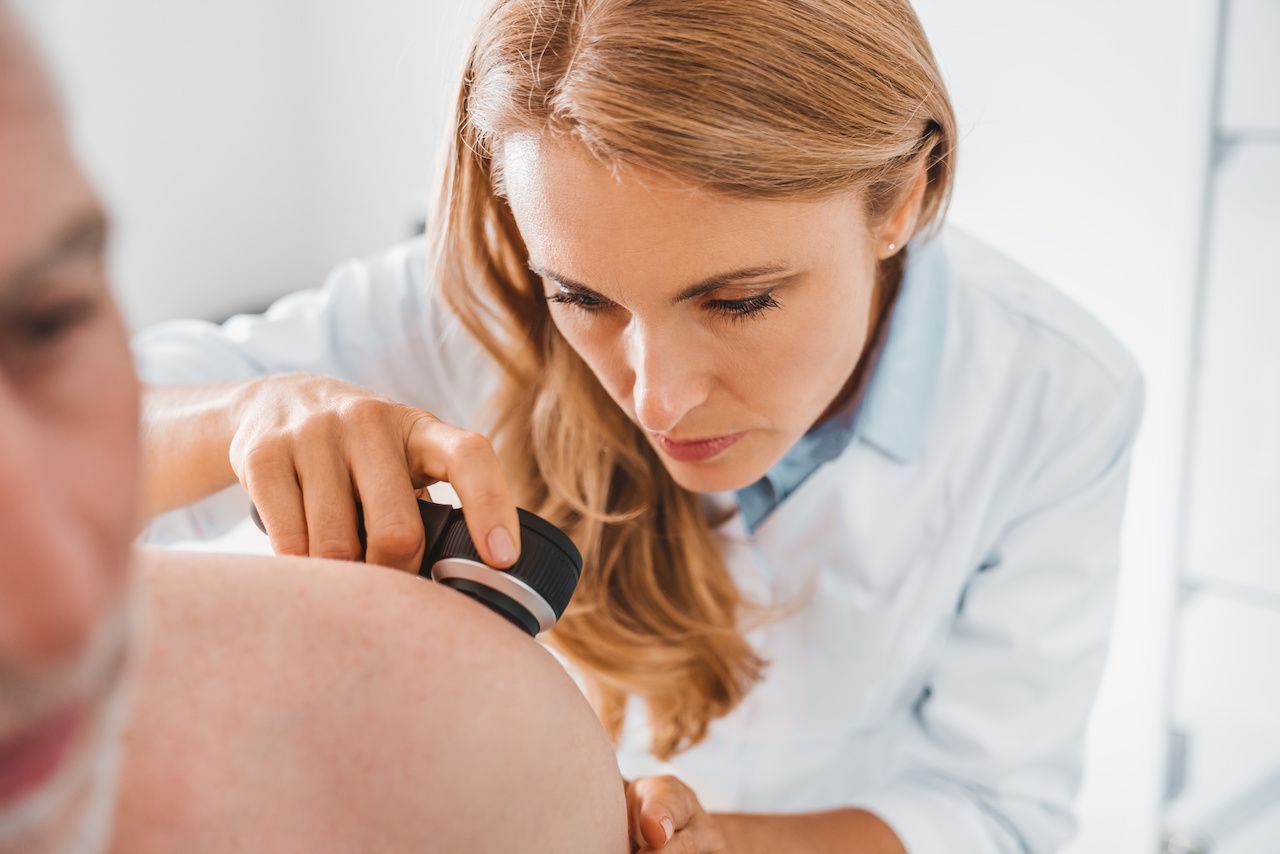The standard of care for resectable stage IIIB or greater melanoma has been neoadjuvant therapy, and new data shows that neoadjuvant immunotherapy provides a long-lasting benefit to these patients, particularly if they achieve a major pathological response (MPR), which is a complete response or a near complete pathological response.1
Georgina Long AO, PhD, MBBS, BSc, FRACP, FAHMS
Image credit: Melanoma Institute Australia
The results were presented by Georgina Long AO, PhD, MBBS, BSc, FRACP, FAHMS, co-medical director of Melanoma Institute Australia, at the European Society of Medical Oncology (ESMO) Congress 2024, held September 13 to 16 in Barcelona, Spain. The data was an updated pooled analysis and expanded cohort of the 2021 pooled analysis of 196 patients with melanoma who were treated with either neoadjuvant immunotherapy or BRAF/MEK targeted therapy.
The 5-year relapse-free survival (RFS) has improved significantly in this population in the last decade and a half, she explained from 35% when the standard approach was observation. Subsequent therapies “moved that needle a little more,” but there were 2 big trials in the last 2 years. The SWOG S1801 trial of neoadjuvant immunotherapy showed a 42% reduction in the risk of an event and the NADINA trial had a 68% reduction.2,3
The new cohort Long presented on included 818 patients with stage IIIB or higher melanoma, of them 633 were clinical trial participants and 185 were real-world patients. The median follow-up was a little more than 3 years (38.8 months), which was driven by trial patients (42.9 months) as real-world patients had a much lower median follow-up (19.9 months), Long noted in her presentation.
The median age of the patients was 59 years and 38% were female. Nearly half (45%) had stage IIIB, 38% had stage IIIC, 2% stage IIID, 11% stage IIIB-D undefined, and 2% stage IV. Overall, 95.3% of patients ended up undergoing surgery and of those, 56.8% received adjuvant therapy. Management of recurrence is still being studied.
A total of 610 patients had received neoadjuvant immunotherapy (immune checkpoint inhibitors; ICI): 169 patients received a PD-1 inhibitor alone, 351 received PD1 plus CTLA-4 inhibitors, 59 received PD-1 plus LAG-3 inhibitors, 27 received a PD-1 inhibitor plus another immunotherapy agent, and 4 received a CTLA-4 inhibitor alone. A total of 88 patients received a BRAF/MEK targeted therapy and 120 received an immunotherapy plus a targeted therapy.
“If we look at the 3 different classes of drugs used, you can see that the highest major pathological responses were for those that received ICI therapies,” Long explained.
Among the overall cohort 55% achieved an MPR: neoadjuvant ICI had the highest MPR rate (58%) followed by BRAK/MEK (51%) and immunotherapy plus targeted therapy (46%). In the ICI cohort, 46% on PD-1 alone achieved an MPR compared with 62% on PD-1 plus CTLA-4, 67% on PD-1 plus LAG-3, and 58% on PD-1 plus another immunotherapy.
The 3-year event-free survival (EFS) rate was 74% (95% CI, 70-78) for patients who received neoadjuvant immunotherapy and 37% (95% CI, (28-49) for patients receiving BRAF/MEK. Within the ICI cohort, the highest 3-year EFS survival rate was 82% (95% CI 70-95) for neoadjuvant PD-1 plus LAG3 inhibitors, followed by 76% (95% CI 72-81) with PD-1 plus CTLA4 inhibitors, and 64% (95% CI 55-7367) with a PD-1 inhibitor alone.
Looking at prognosis by pathological response, which is the “best prognostic marker,” for all treatments patients with an MPR had a 3-year RFS above 85%. Among those without a pathological response, the 3-year RFS was only 40%.
According to the Long and colleagues, patients who achieve a pathological non-response and likely even those who achieve a partial pathological response will need an alternative treatment approach. Broken down by treatment group, the 3-year RFS was:
- 93% to 95% for patients with an MPR on ICI vs 79% for a partial pathological response (pPR) and 43% for a non-response
- 87% to 88% for patients with an MPR on a combination of immunotherapy plus a targeted therapy vs 80% for a pPR and 49% for a non-response
- 55% to 68% for patients with an MPR on BRAF.MEK vs 15% for a pPR and 13% for a non-response
The 3-year overall survival was over 80% for all treatment groups: 81% for BRAK/MEK, 84% for combination immunotherapy plus targeted therapy, and 87% for ICI. For all treatments, the 3-year OS of 97% to 100% for patients with an MPR compared with 70% for patients with a non-response.
“Neoadjuvant BRAK/MEK is not as effective as ICI and is equivalent to adjuvant BRAF/MEK,” Long concluded.
In a discussion after the presentation, Ivan Marquez Rodas, MD, PhD, of the Hospital General Universitario Gregorio Maranon in Madrid, Spain, noted that the most important message is that achieving MPR is not enough, it’s important what therapy is used to achieve it.
“The bottom line is that targeted therapy maybe is not a very good for neoadjuvant treatment,” he said.
References
1. Long GV, Blank CU, Amaria RN, et al. Long-term survival with neoadjuvant therapy in melanoma: Updated pooled analysis from the International Neoadjuvant Melanoma Consortium (INMC). Presented at: ESMO Congress 2024; September 13-16, 2024; Barcelona, Spain. Abstract LBA41.
2. Patel SP, Othus M, Chen Y, et al. Neoadjuvant-adjuvant or adjuvant-only pembrolizumab in advanced melanoma. N Engl J Med. 2023;388(9):813-823. doi:10.1056/NEJMoa2211437
3. CU Blank, Lucas MW, Scolyer RA, et al. Neoadjuvant nivolumab and ipilimumab in resectable stage III melanoma. N Engl J Med. Published online June 2, 2024. doi:10.1056/NEJMoa2402604

